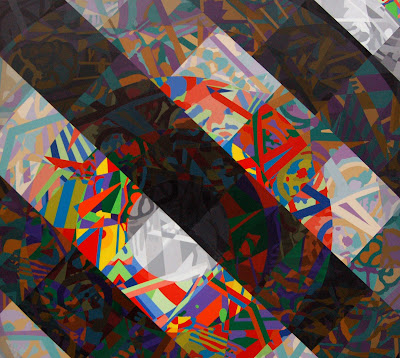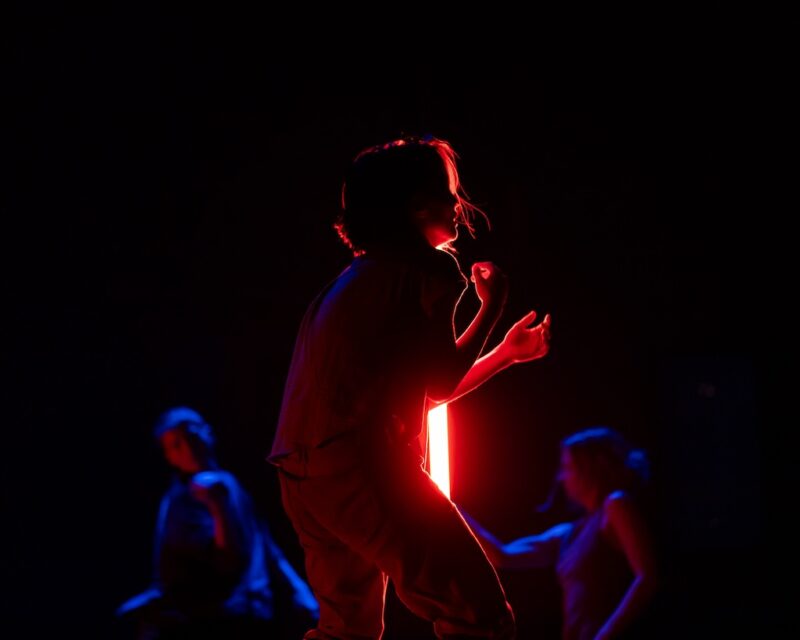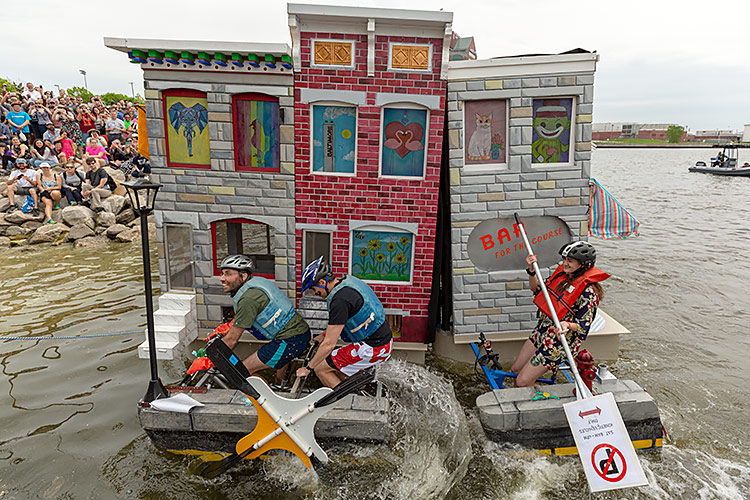Semi Precious: The 2012 exhibition of Sondheim semi-finalists presents a unique slice of Baltimore’s finest artists. by Cara Ober @urbanitemdarts
The Sondheim semi-finalist exhibition, mounted in The Maryland Institute College of Art’s Meyerhoff and Decker Galleries, is an exhibit of almost-but-not-quite: all of its participants were initially in the pool of potential Sondheim finalists but didn’t make the cut to the final six. Walking through this year’s Sondheim Artscape Prize semi-finalist exhibit, I search for the common thread that usually ties group exhibitions together, but I don’t find it. This year’s show features a whopping forty-one artists selected by three Sondheim jurors, so I probably shouldn’t expect a cohesive vision.
The semi-finalist exhibit is a must-see for anyone who wants a speedy education on the range and power of the Baltimore art scene. More so than the exhibit of finalists at the Baltimore Museum of Art, this show presents a broad spectrum of Baltimore artists at their best. It’s an edgy, wild, diverse, and uneven representation of the artists who engage in a larger, contemporary dialogue, and it links them with a national art movement. Put frankly, this is a group of artists whose work would be highly respected in any city but choose to call Baltimore home.
Kim Domanski, Public Art Coordinator at Baltimore Office of Promotion & the Arts, is in charge of the show, and her input and enthusiasm for it are essential to its success. This is her favorite annual project because it’s an opportunity to exhibit a huge amount of high quality work in one place. “Each April I look at all of the incredible artists who for one reason or another weren’t chosen as finalists and am increasingly amazed at the quality of their work,” says Domanski. “Having this exhibition directly on the Artscape site is terrific too because it brings such a huge audience to the work.”
As with most large surveys, the stronger works tend to overpower the weaker ones, with certain pieces rising to the top but for different reasons. When you approach MICA’s Fox Building, Amanda Burnham’s graphic window installation of thick, black contours functions as a bold welcome. It suggests street art and local landscape painting without pandering to either genre. At a huge, allover size, Burnham’s combination of black and white paint, paper, cardboard, and tape, the installation is both overwhelming and intriguing. Her loose, even sloppy, marks suggest an intentional impertinence. Burnham doesn’t represent the local landscape; instead, she invents a new one, part cartoon and part critique.
Around the corner, Matthew McConville’s newest paintings, displayed in a series of four, push the medium of paint into an entity that is solidly pictorial but full of air and atmosphere. Uniquely delicate, McConville merges landscape and still life into peculiar dioramas, where realistic topography is placed on shiny table tops and lit with a naked light bulb. His skill as a landscape painter is highly polished, but the artificial placement of the miniature mountains, glaciers, and hillsides transforms them into contemporary, political statements on complex environmental issues with a precarious balance. In short, they are stunning.
Another standout piece is “The Shroud,” a sculpture by Brent Crothers. From a distance, it looks like two giant wishbones. One shape is actually a natural piece of wood, trimmed to be about 6 feet tall and vaguely symmetrical. An identical partner shape stands next to it but is a honeycomb of negative space, as light and airy as a web. The structure is actually made from hundreds of brass keys, welded together in one thin layer. The two shapes posses a haunting sensation and a primal energy together, although the brass version might be more impressive if it stood alone, without an obvious clue to its creation.
John Bohl’s “Untitled,” around the corner from Crothers’ piece, demands your attention from a distance. The black and white striped wall of hand screen-printed wallpaper creates a fun optical illusion: Like a herd of zebras, it tickles your eyes when you gaze at it from different directions. On top of the wallpaper, Bohl has hung three individual, framed works which might not be as interesting were they not mounted on the busy background. However, this may be part of the fun. Bohl’s wallpaper and images are confidently simple and employ playful color and pattern. His carefree attitude is infectious, and the wall is a show-stopper.
Keith Bentley’s “Cauda Equina” is the polar opposite of Bohl’s wall, which is precisely why its a good choice to share a space with it. The horse is the right size for an equestrian sculpture, but all the horse’s features are obscured by a dense mask of long, black hair. The artist collected the hair from the tails of approximately 250 horses that were “harvested” for their meat. The sculpture’s somber color and sensuous texture, as well as its imposing size, make it a touching memorial. Beyond this, the sculpture is quite physically compelling from across a room. Although it’s probably not allowed, I dare you to not pet it.
Other highlights from the show include Bridget Sue Lambert’s giant color photographs of dollhouses; Steven Pearson’s complex, geometrical abstract paintings; John Ruppert’s oddly real-seeming “River Rocks”; and Nora Sturges’ deft miniature paintings. The semi-finalist exhibition will be on display at MICA through Sunday, August 5, 2012. Read the original review at www.urbanitebaltimore.com.





